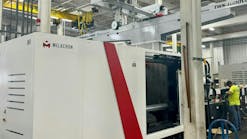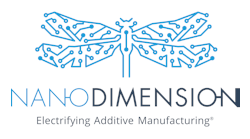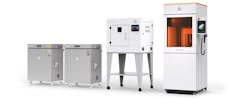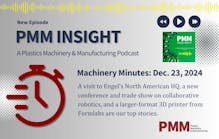ExAM 255 AIM3D GmbH of Rostock, Germany, produces 3-D printers that can print plastic, ceramic or metal parts employing the company’s composite extrusion modeling (CEM) method, which combines the metal injection molding process with additive manufacturing techniques. Its ExAM 255 printer can use standard resin pellets to print parts. The printer is paired with the company’s ExSO sintering furnace, which debinds and sinters parts the ExAM 255 prints with metal or ceramic material suspended in resin.
What's new? CEM E2 extruder, an upgraded component for the ExAM 255 printer that the company plans to launch this month at Formnext in Frankfurt, Germany. The new extruder has print heads for metal-filled materials, ceramic-filled materials or plastics, filled or unfilled. The ExAM 255 has two material hoppers and extruders, so users can print with a support material, build dual-material prints, or print with a single material and two different nozzle sizes.
Benefits Fast, economical printing. This new generation of extruder delivers material more accurately, and extrusion speed has increased by more than 200 percent. The company said the material cost of using a filament to 3-D print a part is 10 times the cost of using standard pellets. The use of conventional resin pellets allows the printer to produce both prototypes and production parts with identical materials. The use of pellets also allows for faster build times.
AIM3D GmbH, Rostock, Germany, 49-381-3676609-0, www.aim3d.de
Vital statistics | |
Build space | 10 inches by 10 inches by 10 inches |
Heating plate temperature | Up to 248 degrees Fahrenheit |
CEM E2 printing speed | Up to 13.4 cubic inches per hour when using a 0.4mm nozzle |
Hopper capacity | 1 liter |






